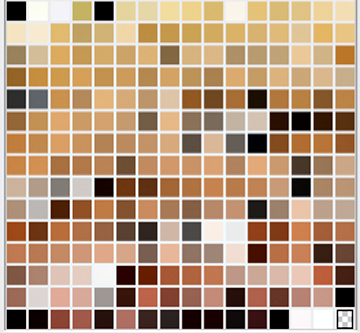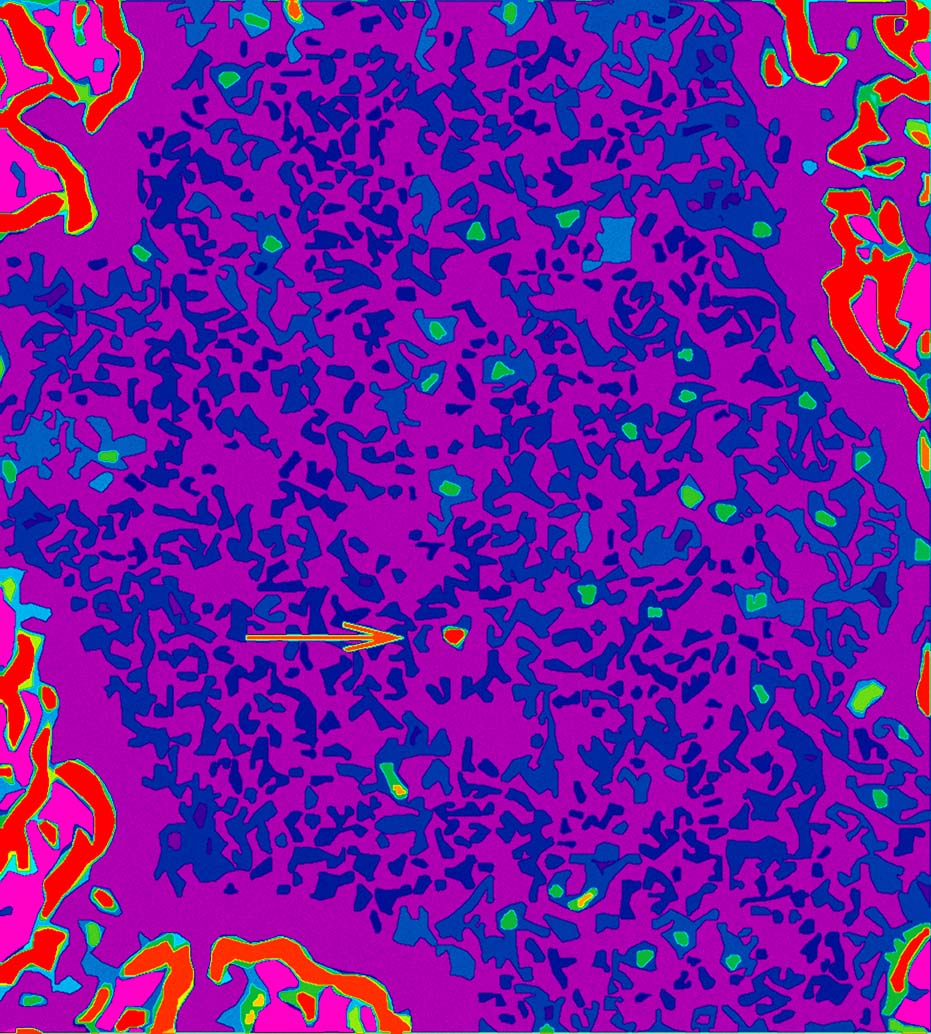This week we are pleased to welcome Aric Mayer as a guest correspondent. Aric’s work has previously been featured in our Photographer’s Showcase here and here.
The entire media experience this week seemed dominated by questions of color and politics. Numerous polls were taken asking variations of the question, “Is America ready for a black president?” The results came back mixed. Maybe yes, maybe no. The question here has to be, what exactly does this mean?
The color palette below was generated from four popular images of Barack Obama and John McCain. These are the combined colors needed to recreate images of both of their faces in their entirety.
As a photographer with extensive experience in photo retouching for national publications, one of the first things that I learned was how to measure the color of a skin tone in an image. Colorimetrics is an interesting and exact science, and suffice it to say that it is possible using ink densities and light measuring tools to describe skin tones in very specific ways. What is surprising is how subtle the differences are between the skin tones of all races. Hues across the spectrum of ethnic groups vary only by a few percentage points. It turns out that all the possible hues and tones of human skin color do not make up an actual rainbow of diversity, but in fact are only a tiny sliver of the possible colors in the visible spectrum. Indeed, skin tones exist in a fairly mundane part of the spectrum, consisting mostly of light tans into dark browns, with subtle variations in color. These colors are dwarfed by the incredible diversity of other colors in the world, greens for instance, the color of chlorophyll. While we are hyper-attenuated to the cultural meanings of skin colors, we tend to categorize them into large groups; what we lack is a cultural language with which to accurately describe their appearance.
Biases and barriers in the political polls are written right into the questions. Barack Obama is not visibly black, nor is John McCain actually tinted white. But the cultural divide between them is frequently shown to be as extreme as the end points on the possible spectrum. The real polling question should not be, “Is America ready for a black president?” But instead, “Is America ready for what might lie between the two extremes?”

